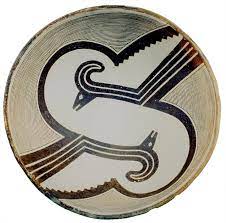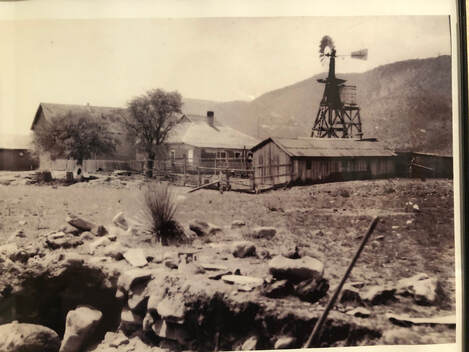Some History to Share

The Mimbres region has seen some of the most intensive and extensive looting in North America because of the exquisite painted pottery. Many believed that there were few archaeological remains left to study. Despite the site destruction, archaeologists over decades have gleaned knowledge of the region’s ancient past. Additionally, recent efforts by local residents to preserve the archaeological record offer hope for the future.
The Mattocks site in the northern Mimbres Valley is the focus of our tours. Participants may explore the site with tour leaders William Hudson or Marilyn Markel, or other volunteers as they walk through the site and museum.
There are three parts. The first briefly introduces the region and its complex history of human groups from Archaic through Classic Mimbres to Apache.
In the second, guides discuss the Mimbres Foundation excavation at the Mattocks site in the 1970s.
In the third and final section, the tour leaders share the impressive work by local residents in preserving the site, laying an interpretive trail, assembling our small museum, providing educational activities for local children, and building facilities for researchers.
The Mattocks site in the northern Mimbres Valley is the focus of our tours. Participants may explore the site with tour leaders William Hudson or Marilyn Markel, or other volunteers as they walk through the site and museum.
There are three parts. The first briefly introduces the region and its complex history of human groups from Archaic through Classic Mimbres to Apache.
In the second, guides discuss the Mimbres Foundation excavation at the Mattocks site in the 1970s.
In the third and final section, the tour leaders share the impressive work by local residents in preserving the site, laying an interpretive trail, assembling our small museum, providing educational activities for local children, and building facilities for researchers.
Excavations
The Mimbres people lived here about 1,000 years ago, and as far back as 1883, the site has attracted the interest of archaeologists. Adolf Bandelier stopped to visit Dr. Granville Wood, homesteading the property in 1883. In 1929-31, the first scientific excavation was led by Paul Nesbitt of the Logan Museum, Beloit, Wisconsin.
In the 70's, the Mimbres Foundation conducted another major dig and study of the Mattocks Site. Detailed information can be found in the texts available for purchase in the museum gift shop or learned on our tours.
